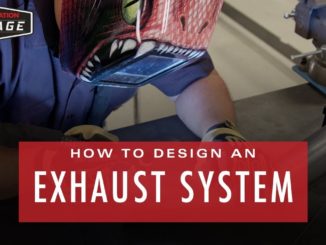
Stock exhaust manifolds are restrictive, but a set of mandrel-bent aftermarket headers will allow the exhaust gas to move freely from the engine, reducing power-robbing backpressure in the process. And a good set of headers will actually build up enough exhaust flow velocity to create energy pulses that pull or scavenge spent gases from the engine.
The question is, how do you choose the right set of headers for your vehicle?
This article and accompanying video via Summit Racing covers the five key factors in choosing the right exhaust headers for your vehicle:
Key Factors for Exhaust Header Selection:
Vehicle and Engine Combination
There is no one-size-fits-all solution when it comes to headers. You’ll notice on the Summit Racing website, headers are listed for specific combinations of engines and vehicles.
Just because a set of headers fit a similar vehicle with the same engine, doesn’t mean it will fit your car. You’ll also notice special fitment notes for many headers — pay close attention to these notes.
The header flange must match the cylinder head bolt pattern and accommodate the exhaust port size, shape, and location.
The primary tubes have to snake around things like your vehicle’s frames, chassis and suspension parts, mounts and brackets, linkages, and more.
And the collectors have to end up in a place where the rest of the exhaust system can be connected.
With all that in mind, you need to factor in things like:
- vehicle year, make, and model
- engine type and size
- 4WD vs. RWD vs. AWD
- automatic vs. manual transmission
- floor shifter vs. column shifter
Header Configuration
Full-length headers utilize primary tubes that are longer than the primaries on your stock exhaust manifold. In most cases, these four primary tubes empty into one collector pipe and form a “4-1” design. Full-length headers help produce more overall power with good power in the low- and mid-rpm ranges—right where most street-driven vehicles can use it the most!
Shorty headers consist of four short primaries that dump into one short collector pipe. The compact dimensions make shorty headers a perfect choice for extremely crowded engine compartments or lowered vehicles where clearance is a concern. Shorty headers also typically work with the remaining stock exhaust components without modification, so installation is often a quick, clean process.
Although shorty headers don’t always produce as much low- and mid-range power as full-length headers, they do provide significant power gains over stock manifolds and have the potential to produce higher rpm power gains.
Mid-length headers offer some of the benefits of full-length and shorty headers. They provide longer primaries than the stock manifold to help produce more of that coveted low- and mid-range torque and power. However, the primaries are not as long as full-length headers, so there’s increased clearance for lowered vehicles.
Primary Diameter
There are many factors that go into choosing the right pipe diameter—engine size, horsepower, the intended use of the vehicle, and more—but one common mistake that many hot rodders make is to assume bigger is better.
Although smaller-diameter primaries will flow less volume than bigger primaries, a smaller diameter pipe actually creates faster exhaust flow velocity with just enough resistance to foster good low- and midrange torque.
For that reason, most header manufacturers recommend modest pipe diameters for street applications—1 ½-inch to 1 5/8-inch diameter primaries for a small block engine, for example.
Header Materials
Most aftermarket headers are made from steel or stainless steel.
The advantage of choosing a standard steel header is simple: cost. Mild steel headers cost significantly less than varying types of stainless steel but don’t offer the durability of stainless steel.
Stainless steel headers last longer than mild steel headers in extreme conditions. They are better able to stand up to extreme heat and will not rust. The superior thermal characteristics and the rust-free surface of stainless steel allow them to maintain smooth, restriction-free exhaust flow throughout their lifespan.
Coating or No Coating
The most common type of header coating is a ceramic coating, which provides an added thermal barrier. This keeps heat inside the primaries and helps keep ambient temperatures low in the engine compartment.
That means cooler, denser intake charges and increased horsepower. In addition, ceramic coated headers maintain their finish, even in extreme conditions.
Headers are also available with a natural or painted finish. These finishes are a more affordable alternative to coated headers but don’t provide the performance or durability benefits.
Editor’s Note: Some parts are not for use in California or other states with similar laws.




